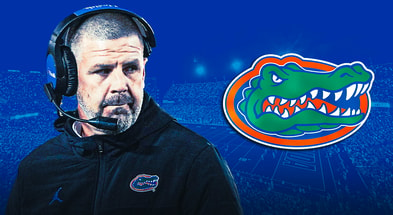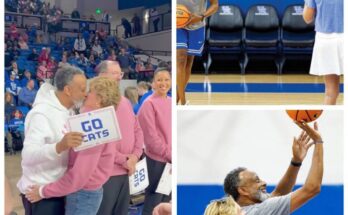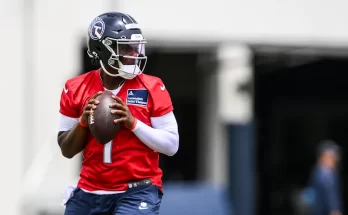Palm Beach Powerhouse Gary Condron Lifts the Lid on NIL’s Impact at the University of Florida
University of Florida donor Gary Condron sat down with USA TODAY Sports to discuss the ever-evolving landscape of name, image, and likeness (NIL). His insights – rooted in passion for Gators athletics, stewardship of education, and a keen eye for athletic branding – paint a nuanced portrait of how NIL is reshaping college sports at Florida and beyond.
Gary Condron is not your average donor. A Palm Beach native and dedicated University of Florida supporter, he’s invested millions in student-athlete scholarships, academic programs, and athletic initiatives. To him, NIL is more than a buzzword: it’s a powerful opportunity for young athletes, the university, and the broader community.
Condron began the USA TODAY Sports conversation by reminding us of the foundational mission behind NIL reforms: “We’re finally empowering athletes to benefit financially from what they build on the field. It’s fairness, plain and simple.” His passion is palpable—this is no detached academic; this is a man deeply invested in the traditional values of college athletics.
For decades, the NCAA prohibited athletes from earning compensation tied to their athletic performance. Everything—from sneakers to camps—was off-limits. But since 2021, that all changed, and Condron sees this as a positive disruption.
-
Empowerment Through Monetization
Athletes at UF can now sign endorsement deals, monetize social media, host clinics, and more. These opportunities not only reward their hard work but also help offset costs like travel, nutrition, and living expenses—especially important for those from low-income backgrounds. Condron explains it crisply: “An athlete from an underserved community who goes viral promoting a local business—that’s real money helping their future.” -
Recruiting and Retention
The introduction of NIL has recomposed recruiting dynamics. Athletes want to know not just about championships, but also about NIL strategy. Condron points out that Florida’s strong brand and donor network mean Gators athletes often land deals before ever stepping on campus. “Our job,” Condron told USA TODAY Sports, “is to make sure our athletes have every tool—mentorship, marketing workshops, legal advice—to build their brand while studying and competing.” -
Balancing Academics and Athletics
There’s a tension: athletes juggling sponsorships and coursework. The university has responded with robust support systems—namely an NIL team, academic advisors, and compliance staff. Condron believes this holistic approach distinguishes Florida: they don’t just sign deals, they help athletes sustain them. “It’s about longer-term success,” he emphasized, “built on smart decisions.”
Condron’s insider view revealed Florida’s multi-pronged NIL program:
-
Educational Workshops
Guest speakers ranging from marketing professionals to tax attorneys provide athletes with knowledge of branding, negotiation, and financial planning. -
Brand-Building Resources
A media studio on campus offers free access to professional-level content creation tools—lighting, cameras, editing software—for athlete-driven promotions and social posts. -
Mentorship Networks
Former Gators athletes and donor volunteers act as mentors. Condron himself sometimes meets with athletes to discuss long-term career planning, reminding them that today’s deals are part of a greater life path. -
Community Partnerships
Local businesses benefit from athlete presence, and athletes gain exposure in local media. Condron underscored this interdependence: “A local boutique hosting a meet-and-greet with a UF athlete—that builds both their brand and ours.”
All of this, he said, helps maintain the University of Florida’s reputation as an NIL leader—where deals are plentiful but sustainable, and where athlete success (on and off the field) comes first.
Despite optimism, Condron admitted that the NIL world is not without pitfalls:
-
Unequal Opportunity
Not every athlete gets the spotlight. Sports like football, men’s basketball, soccer, gymnastics—they don’t all receive the same deal flow. Women’s athletes, in particular, often lag in sponsorship opportunities. Condron noted that Florida is working to equalize exposure, with targeted workshops and partnerships for women’s teams—and donors like him stepping up with sport-specific funding. -
Ethical Gray Areas
With donor-rich environments, questions arise about undue influence. Condron firmly stated: “Any donation must go through university compliance channels—100% transparency.” The university holds quarterly reviews, and every deal involving boosters is documented and vetted. “No backroom deals,” he said. -
Tax, Liability & Legal Risks
Athletes signing endorsement agreements must navigate tax complexities, intellectual property rights, and liability issues—especially for events or social media promotions. Condron praised Florida for ensuring each athlete sees a lawyer and an accountant before finalizing any contract. -
Coach & Player Dynamics
NIL has given athletes more clout in choosing schools, and coaches now find themselves balancing recruitment with brand development. At UF, Condron said coaches are trained on NIL so they don’t conflict with athletes’ business interests—fostering collaboration. “Coaches assist athletes in marketing, not discouraging it,” he emphasized.
Condron shared several examples showcasing Florida’s NIL success:
-
A female gymnast whose Instagram following leapt from 20,000 to over 200,000, landing a cosmetic brand partnership that helped fund her international training.
-
A kicker with a viral TikTok clip who secured an equipment sponsorship and is now saving for graduate school.
-
A sprinter from a rural background who turned a national championship into a nationwide shoe deal—with supplemental financial benefits from Condron’s scholarship fund.
“These aren’t just checks,” Condron said. “They’re stories—proof that NIL is rewriting futures.”
Condron expressed excitement about the road ahead:
-
Technological Integration
UF plans to expand its digital media offerings. Augmented-reality filters, virtual meet-and-greets, and athlete-driven podcasts are next on their roadmap. Condron described a vision where “every athlete has their own channel—on campus or beyond.” -
Branding Beyond Athletics
Florida wants NIL athletes to be known not just for sports, but for scholarships, volunteering, entrepreneurship, and advocacy. Condron sees this as legacy-building. “We’re teaching them that your reputation is your most valuable asset.” -
Legislative Evolution
National NIL regulations remain unresolved. Calls for federal standards continue, and Florida is tracking state-level progress. Condron’s hope: “A clear, fair national framework. Until then, universities must self-regulate—and I believe UF is doing that responsibly.” -
Giving Back
With gains come responsibilities. Condron is working to channel NIL influence into philanthropy, particularly in underserved Florida communities. He imagines athletes running free clinics, speaking at schools, and raising funds for youth programming—then giving back, full circle.
At the end of the conversation, Condron returned to his original point: dollar amounts matter, but what matters more is dignity, empowerment, and growth. For him, NIL represents a historic shift—a chance to treat athletes as more than just participants.
-
“It’s not about titles or trophies,” he said softly, “it’s about transformation.”
-
“We’re building people, not just players.”
In Donor Gary Condron’s eyes, Florida’s model balances opportunity with responsibility. Yes, athletes deserve to profit from their name, image, likeness—and yes, they deserve the full support of the university community so that their choices today enhance their careers tomorrow.
Condron’s optimism is infectious. His final message to USA TODAY Sports readers: “When properly guided, NIL is a force multiplier—for athletes, for the university, for the state. It’s not just a policy change—it’s a cultural renaissance in college sports.”
For Gators fans, it’s a reminder that the person running out of the tunnel or appearing on their feed is more than an athlete: they’re an empowered individual, an ambassador, a potential role model—and yes, a brand in their own right.
Over the next decade, few initiatives will shape college athletics as profoundly as NIL. With Gary Condron, Florida is staking its claim not just as a sports powerhouse—but as a leader in athlete empowerment. That in itself may redefine what it truly means to be a Gator.



